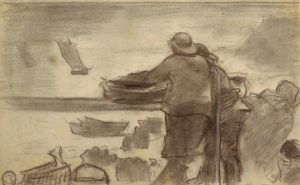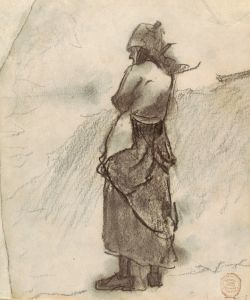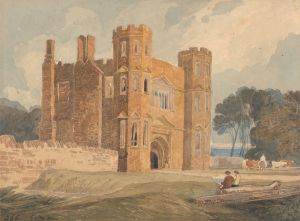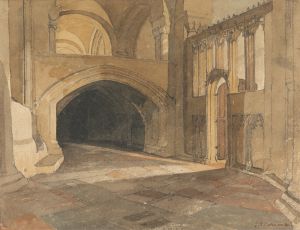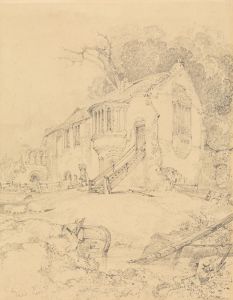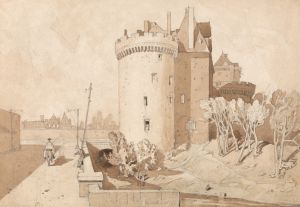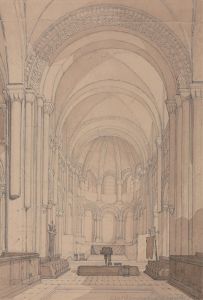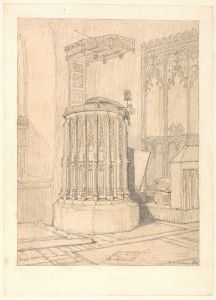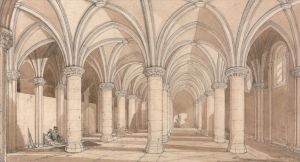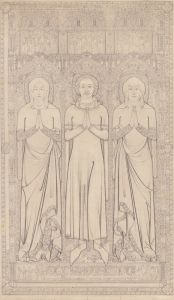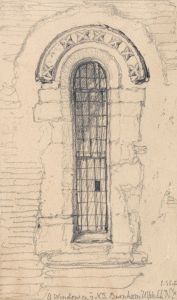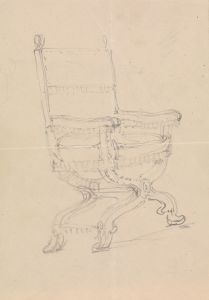
An Ancient Alms Box, Walsingham Church, Norfolk
A hand-painted replica of John Sell Cotman’s masterpiece An Ancient Alms Box, Walsingham Church, Norfolk, meticulously crafted by professional artists to capture the true essence of the original. Each piece is created with museum-quality canvas and rare mineral pigments, carefully painted by experienced artists with delicate brushstrokes and rich, layered colors to perfectly recreate the texture of the original artwork. Unlike machine-printed reproductions, this hand-painted version brings the painting to life, infused with the artist’s emotions and skill in every stroke. Whether for personal collection or home decoration, it instantly elevates the artistic atmosphere of any space.
John Sell Cotman was a prominent English artist and a leading member of the Norwich School of painters, known for his landscape watercolors and architectural subjects. One of his notable works is "An Ancient Alms Box, Walsingham Church, Norfolk," which reflects his interest in capturing historical and architectural details.
The painting depicts an alms box located in the church at Walsingham, a village in Norfolk, England. Walsingham is renowned for its religious significance, particularly as a pilgrimage site dating back to the medieval period. The village is home to the Shrine of Our Lady of Walsingham, which has been a major pilgrimage destination since the 11th century. The church itself, where the alms box is located, is part of this rich historical and religious tapestry.
Cotman's work is characterized by his meticulous attention to detail and his ability to convey the texture and materiality of objects. In "An Ancient Alms Box, Walsingham Church, Norfolk," Cotman focuses on the alms box, an object used for collecting donations for the poor. Such boxes were common in churches throughout England and played a significant role in the social and religious life of the community.
The painting is executed with Cotman's typical precision and clarity. He employs a restrained color palette, which is a hallmark of his style, allowing the viewer to appreciate the form and craftsmanship of the alms box. The composition is carefully balanced, with the alms box centrally placed, drawing the viewer's attention to its historical and functional significance.
Cotman's choice of subject matter reflects his broader interest in the architectural and historical heritage of England. Throughout his career, he produced numerous works that documented the country's medieval and ecclesiastical architecture. His paintings and drawings serve as valuable records of historical sites, many of which have since changed or disappeared.
"An Ancient Alms Box, Walsingham Church, Norfolk" is part of Cotman's larger body of work that includes both watercolors and etchings. His etchings, in particular, demonstrate his skill in capturing intricate architectural details and his dedication to preserving England's historical monuments through art.
Cotman's work was influential in the development of watercolor painting in England. His approach to composition, use of color, and attention to detail were admired by his contemporaries and continue to be appreciated by art historians and enthusiasts today. His contributions to the Norwich School helped establish it as an important movement in British art, characterized by its focus on local landscapes and architecture.
In summary, "An Ancient Alms Box, Walsingham Church, Norfolk" by John Sell Cotman is a testament to the artist's skill in depicting architectural subjects with precision and sensitivity. The painting not only highlights Cotman's technical abilities but also his commitment to documenting England's historical and religious heritage. Through works like this, Cotman has left a lasting legacy that continues to inform and inspire the appreciation of historical art and architecture.






